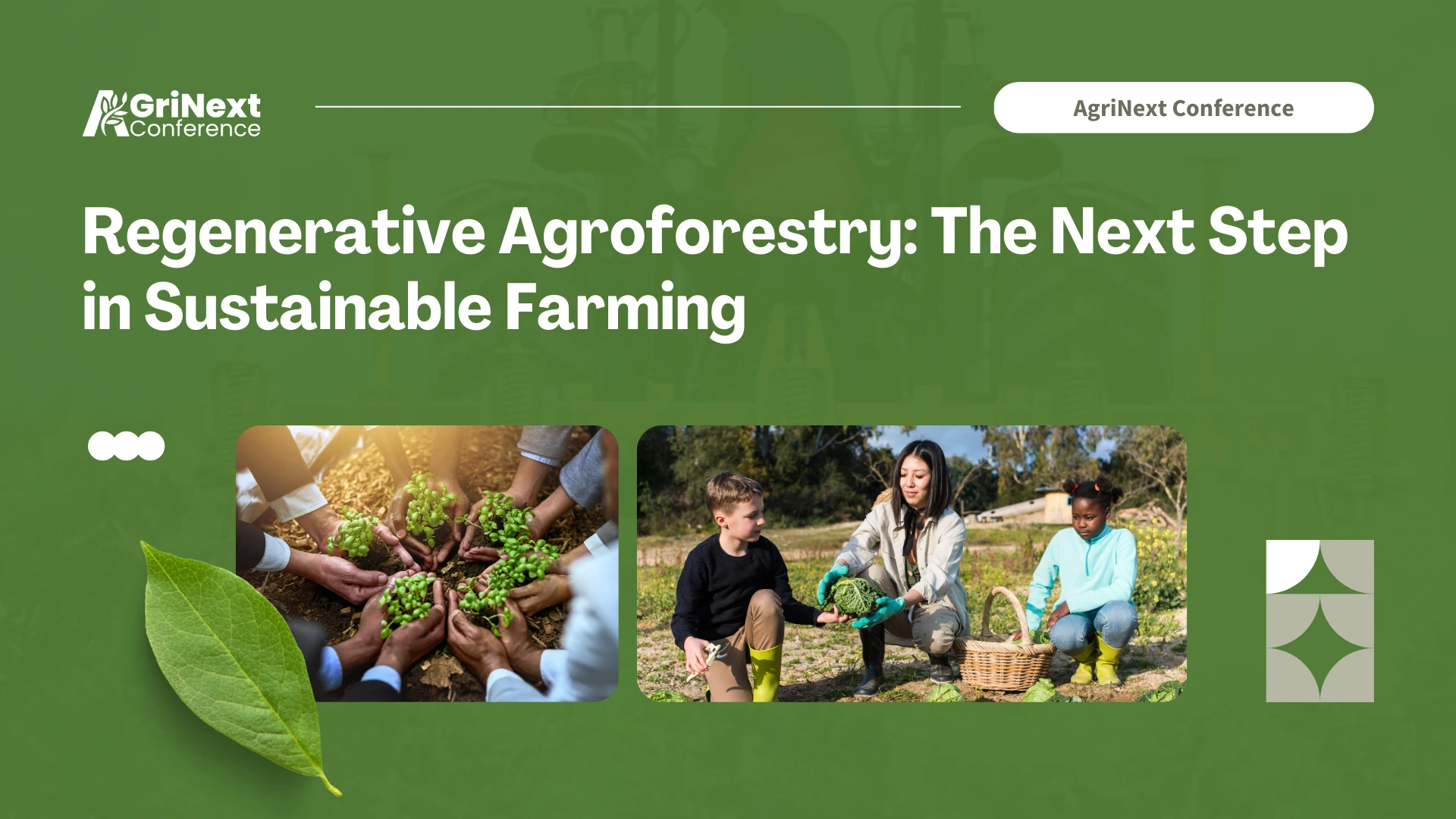
Introduction
Our world is changing. With increasing climate concerns and a projected population of 10 billion by 2050, nations worldwide are committing to reducing greenhouse gas emissions. This means global food production must prepare for an uncertain future while meeting the demands of a growing population.
As the world grapples with these challenges, it becomes crucial to rethink our agricultural systems. One approach that holds promise is regenerative agroforestry, which goes beyond traditional methods to restore ecosystems while ensuring food security.
Climate, Soil, and Farming: An Intimate Relationship
The way we produce food has a massive impact on our planet and is a major driver of the climate crisis. Farming alone is responsible for almost 30% of global greenhouse gas emissions. The land conversion, heavy mechanization, and synthetic fertilizers used in industrial agriculture create ecological dead zones, release carbon from the soil, and disrupt natural ecosystems.
Agroforestry has long been recognized as a sustainable land management practice, integrating trees, crops, and livestock to enhance biodiversity and productivity. But regenerative agroforestry goes even further. It blends permaculture principles with agroforestry to restore ecosystems, build soil health, and create self-sustaining agricultural systems. Unlike conventional agroforestry, which primarily focuses on productivity and land efficiency, regenerative agroforestry is not just about growing food—it’s about healing the land while doing so.
By working with nature instead of against it, regenerative agroforestry creates self-sustaining, productive ecosystems that give back to the earth rather than depleting it. This approach offers a powerful solution to the climate crisis, food security challenges, and soil degradation—all while producing food in a way that benefits both people and the planet.
What Makes Regenerative Agroforestry Different?
Unlike conventional agroforestry, which primarily focuses on productivity, regenerative agroforestry is about regeneration. Instead of working against nature, the farmer worked with it, integrating trees, crops, and livestock in a way that mimicked natural ecosystems. It helps rebuild soil, increase biodiversity, and even fight climate change.
Key Features of Regenerative Agroforestry
Mimicking Natural Ecosystems
Regenerative agroforestry designs agricultural systems that closely replicate natural ecosystems. This approach integrates diverse plant species, trees, crops, and sometimes livestock to create self-sustaining systems that enhance biodiversity and ecosystem services.
Soil Health and Carbon Sequestration
While traditional agroforestry improves soil health through organic matter and erosion control, regenerative agroforestry takes it further by actively rebuilding degraded soils. Practices like cover cropping and tree integration enhance carbon sequestration, water retention, and nutrient cycling, making soils more fertile and resilient.
Climate Resilience
Regenerative systems are designed to withstand extreme weather events such as droughts, floods, and pests better than conventional or even traditional agroforestry systems. This resilience is critical in the face of climate change.
Economic Diversification
Regenerative agroforestry emphasizes diversified income streams. By integrating cash crops, fruit trees, timber, and livestock, it reduces financial risks for farmers compared to single-income systems.
Restoration of Degraded Lands
Beyond sustainable land use, regenerative agroforestry focuses on actively restoring degraded ecosystems. For example, integrating fast-growing trees with crops can rehabilitate barren lands while providing food and income for local communities.
Core Principles
Regenerative agroforestry incorporates principles that extend beyond the goals of traditional agroforestry:
Keeping soil covered to prevent erosion.
Increasing crop diversification to enhance resilience.
Ensuring food security while regenerating ecosystems.
Promoting knowledge exchange among farmers and stakeholders.
Achieving economic viability for long-term sustainability.
Real-World Applications and Benefits
Farmers worldwide are adopting regenerative agroforestry to restore degraded land, increase yields, and build climate-resilient farms. This approach enhances biodiversity, improves soil health, and secures livelihoods by diversifying income sources. Here are some inspiring examples of how regenerative agroforestry is transforming agriculture:
Boosting Productivity and Restoring Ecosystems
One remarkable example of regenerative agroforestry is a cacao farm in Brazil’s Atlantic Forest. Instead of growing cacao in open fields, farmers planted cacao trees under a canopy of native trees, mimicking their natural habitat. This approach not only improved yields but also restored degraded forests, brought back wildlife, and improved water retention in the soil. In fact, agroforestry cocoa in Brazil is three times more productive than monoculture systems.
Similarly, in Malawi and Zambia, farmers have integrated “fertilizer trees”–nitrogen-fixing species that naturally enrich the soil—into their maize fields. This has resulted in 400% higher maize yields compared to the national average. Meanwhile, in Colombia, cattle grazing in agroforestry systems is proving beneficial, with healthier animals producing up to five liters more milk per day.
By enhancing agriculture through agroforestry, we maximize land efficiency and reduce the need to expand into biodiversity-rich areas, preserving ecosystems while ensuring food security.
Improving Farmer Livelihoods
Farming systems that rely on a single income stream, such as cattle or coffee, are financially vulnerable. A market crash, drought, or disease outbreak can leave farmers without income. Regenerative agroforestry offers financial resilience by creating multiple income streams through crop diversification.
For example, in Indonesia, a project integrates white pepper cultivation with a variety of other crops. Alongside their primary crop, farmers grow mangos, bananas, and timber, which can be sold locally or used for family consumption. In Tanzania, farmers mix high-value cash crops like cardamom with staple crops such as bananas, beans, and maize, ensuring both food security and income stability.
Additionally, trees in agroforestry systems can be grown on steep slopes or poor soils, allowing farmers to maximize their available land while improving soil structure and fertility.
The Bigger Picture
Regenerative agroforestry is proving that sustainable farming can be profitable, resilient, and environmentally restorative. By embracing diversity, enhancing productivity, and improving livelihoods, this approach provides a scalable solution to the challenges of modern agriculture.
Conclusion
Regenerative agroforestry goes beyond traditional agroforestry by integrating permaculture principles for long-term sustainability. It’s more than just a farming technique—it’s a mindset shift. Instead of viewing land as a resource to exploit, we start treating it as a living system that thrives when nurtured.
Whether you’re a farmer, an environmentalist, or simply someone who cares about the planet, embracing regenerative agroforestry can make a difference. By learning, experimenting, and spreading awareness, we can collectively shape a future where food production regenerates ecosystems rather than depleting them. The future of food can be sustainable—we just need to take the first step.
Looking Ahead: AgriNext Awards, Conference & Expo 2025
Regenerative agroforestry will be a key topic at AgriNext 2025, where experts, innovators, and farmers will come together to discuss sustainable farming solutions. With a focus on technology, sustainability, and future-proofing agriculture, the event will highlight how regenerative practices can transform global food systems. Stay tuned for insights from AgriNext 2025!
Signup For AgriNext Conference Newsletter

